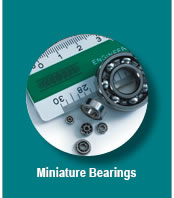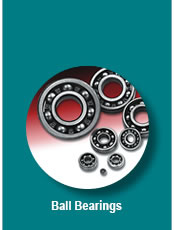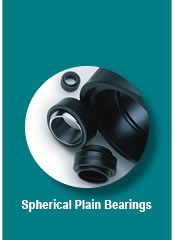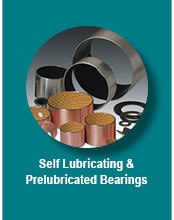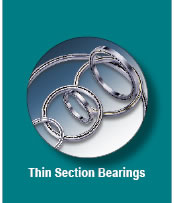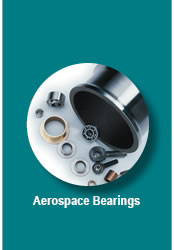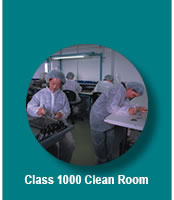It takes a lot of
expertise to select a full bearing or even the particular retainer
within that bearing for best product performance. Find out why a
distributor can often be of more assistance than a bearing factory
engineer.

It is commonly thought that
working directly with a factory engineer is the most direct approach to
solving a bearing design problem. But is it? Unless the
engineer has exactly the relevant expertise needed, you might be better
off with another engineer, manufacturer or another bearing type. A good
distributor, with their broader experience and perspective on bearing
solutions, could offer you access to the wide range of manufacturers
throughout the world for the optimum solution.
The consequences of not considering all
pertinent factors in bearing selection are sometimes severe. For
instance, focusing only on performance and reliability, without
considering price and availability, can result in a product too costly
to produce. Alternatively, specifying a bearing that meets a
target cost, without verifying reliability, can lead to disaster when a
product, such as a medical device, goes to market. The factors that
must be considered include: performance, reliability, service life,
source country, availability and price.
Consider a recent example I was
made aware of. A company's product design team had worked with a bearing
factory engineer to specify a bearing for a pump in their medical
device. Having the application description, the bearing engineer
recommended a bearing that was being used in a pump for an aircraft
application. Once the product went into pre-production, the design was
re-reviewed for costs and the bearing was identified as costing nearly
50 times the cost of a different bearing used on another pump made by
the same company. The aircraft bearing was probably second to none in
performance and reliability, but was extremely costly and had
prohibitively long lead times, the alternate bearing not only met the
performance and reliability requirements but also the price and
availability needs of the application. The evaluation process and work
required to change the design to incorporate the other bearing added
significant engineering time and expense.
As a distributor, National Precision Bearing, has over 200
years of bearing selection and specification experience NPB
offers its customers direct access to the deep knowledge of its vendors
and their engineering teams, as well as a broad range of application
based solutions. For the success of your product, it’s vital to focus
on all factors in the product selection process. NPB can help your
company make sure that happens. Once a requirement is defined, NPB will
work with a customer and the factory to create a complete sourcing
solution leading to a reduced total cost of design and procurement.
If you would like input on your next bearing
design project, or need help finding less costly alternatives for a
bearing in an existing design, contact your NPB Field Sales Representative today.
Tom Koetje, Manager of NPB Products

Selecting the correct retainer
plays a critical role in determining the successful performance of a
precision ball bearing. The retainer, also known as a cage, is
the bearing component that separates the balls and maintains their
symmetrical radial spacing. Many factors must be taken into
consideration when making this important decision. Depending upon
the application, cages can be selected to meet torque, load, speed,
temperature, and even lubrication requirements. Many cage designs
have been developed to meet a wide range of requirements.
Here are some of the more common ones......
The most common
precision ball bearing retainer is the two piece stamped and crimped
metallic ribbon retainer made of stainless steel. This design is a
closed pocket design with loosely clinched tabs, which helps prevent
cage windup in sensitive low torque applications. It’s used on
radial bearings. The ribbon retainer is advantageous due to its’
high durability and low starting torque. It is also inexpensive
and used for most general applications. The ribbon retainer is
best suited for lower speed applications under 90,000 dN (bore mm x
rpm).
Another standard retainer commonly
used is the one piece stamped crown retainer. This stainless
steel retainer has coined ball pockets and polished surfaces which
result in a smooth low-friction contact surface for the balls. The
crown retainer is used on radial bearings due to its’ smooth running
and slightly higher speed capability than the metallic ribbon
retainer. The stamped crown is inexpensive, lightweight, and also
used on most general applications.
For higher speed applications, a
machined crown retainer was developed. The machined crown
retainer is used on radial bearings for speeds reaching up to 1,200,000
dN. This retainer can be made from several different types of
materials depending upon the application’s requirement.
These materials include paper or linen based phenolics, and
polyamides. Both phenolic materials can be vacuum impregnated
with oil, allowing for better lubricity within the ball pockets.
The polyamide materials contain small amounts of graphite and
PTFE, which aid in lubricity as well. The polyamides also have the
added advantage of being fully autoclavable, which makes them well
suited for medical and dental applications. Phenolic retainers
are typically used on medical, machine tools, aircraft instrument, and
high speed motor applications, while polyamides are used on medical,
dental, and high temperature applications.
For ultra high speed
applications, a machine full type retainer is recommended. This
retainer is only used in angular contact bearings. The balanced
and symmetrical design of the full retainer allows it to achieve speeds
of up to 2,000,000 dN. This retainer is also built from
either the phenolic or polyamide materials which allow it to have the
same advantages as the machined crown retainer. The machine full
type retainer is often used on machine tool spindles, high speed
motors, dental, aircraft instrument, and medical applications.
There are many factors that must
be taken into consideration when deciding upon the correct retainer
for a bearing. Each retainer has its’ own distinct advantage
which make it suitable for a particular application. If you need
help in deciding, you can ask your technical sales specialist at National
Precision to help determine which retainer would work best for
you.
John Meneses, Miniature Product Manager

The end of 2009 and beginning of 2010 has
seen a considerable increase in the actual throughput of our re-lube
service. In an average month at NPB, nearly 200,000 bearings are
processed in our class 1000 re-lubrication facility. December’s total
was 176,300 and January was in excess of 318,400 pieces. A growing
number of customers have found NPB as a reliable source for bearing
preservation and re-lubrication. If you have a question about bearing
re-lubrication or need a quote, please contact your technical sales specialist.
Tom Koetje, Manager of NPB Products
As
you see, price isn't everything, but availability of the correct
bearing with the correct component parts is something National Precision
Bearing can provide.
|


